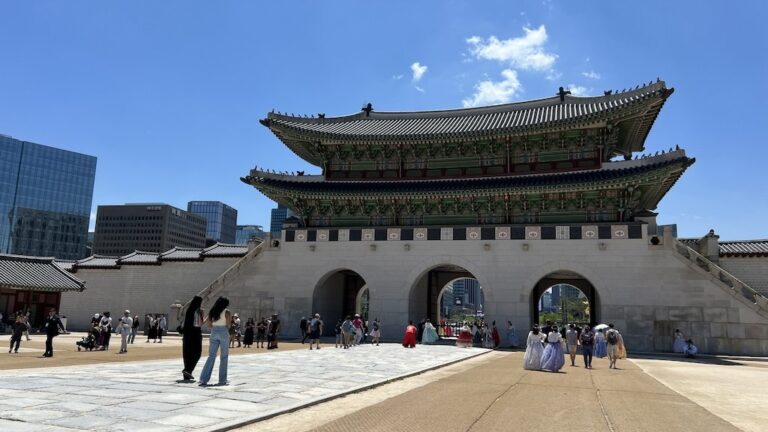Hiking Yosemite’s Panoramic Trail
This post outlines everything you need to know about hiking Yosemite Valley’s Panoramic Trail. In my opinion, it’s one of the best hikes in the valley! It’s a long day hike, with parts that are tough but manageable. Alltrails says its about 13.4 miles all said and done, and 4,425ft of elevation gain.
It’s a point to point trail, starting (or ending) in Happy Isles and ending (or starting) at the Four Mile Trailhead, about 3 miles down the road. You could walk between the start and finish but there is a convenient Yosemite Valley shuttle that picks up and allows this hike to be a loop.
If you need more information about Yosemite, I recommend you check out some related posts:
And while you’re in the area, you might want to consider some of the other amazing national parks nearby:
- Lassen Volcanic National Park, a few hours north
- Mt. Whitney, the tallest peak in the continential USA, a few hours south
- There are a lot of hot sprints in the Sierra Nevada mountain range, so you might want to check out the top 10 hot springs in California.
- Other great hikes and areas of California to explore on this bucket list
Now let’s get into it!
Why is it such a great hike?
There are few trails in Yosemite Valley that are loops, and even fewer that have flat, traversing terrain. Most trails are up one way and down the other. The great thing about this hike is it’s up, flat, up, flat, down. It provides variety in ways you’ll definitely enjoy!
The other reason this hike is amazing is that you get to hit all of Yosemite Valley’s highlights in one go: Vernal Falls, Nevada Falls, back and side views of Half Dome, and access to Glacier Point (which has views of Tenaya Canyon, Yosemite Falls, and the rest of the valley).

What should I bring with me?
Plenty of water and food. There are no filtered water sources along this hike until you get to Glacier Point (and only then, if Glacier Point is open, which it was not as of the writing of this post). So bring at least 3-4L and something to filter water with (iodine or a gravity filtration system). Bring food to keep you energized for anywhere from 8-12 hours of hiking depending on your speed. Bring sunscreen, a hat, sunglasses, and layers depending on the time of year, and wear durable hiking shoes with traction. Hiking poles are also very helpful on the steep ascent and descent parts, especially since on the Mist Trail the trail can become slick with waterfall mist (hence the name).
I have a roundup of my go-to day hiking gear recommendations, and never forget the 10 essentials so you can recreate safely!

So what’s the Panoramic Trail like?
I prefer to hike this clockwise around the valley: Mist Trail, to Panoramic, to Four Mile Trail. You can always hike it in reverse, but the reason why I like this order is because I personally do better going down on switchbacks than on stairs – so depending on how you do when descending and when you are tired, you can pick your poison accordingly. Starting on the Mist Trail means going up on stairs and going down on gradual switchbacks.

Starting on the Yosemite Mist Trail
The Mist Trail is one of the Crown Jewels of Yosemite hikes, so it’s awesome that you get to experience it as part of the larger panoramic journey. That said, it’s one of the most popular trails, and in summer can get very crowded, so start early to avoid this problem. The Mist Trail is approximately 4 miles of 3500ft of elevation gain, and on the way you pass by 2 enormous waterfalls, both with beautiful emerald pools and beautiful creeks. The trail is primarily steep stairs up until the top of Vernal Falls, and then a combination of stair switchbacks up to Nevada Falls. You can refill water (filtering only, there are no water fountains) at the top of Nevada Falls.


Transitioning to Panoramic Trail
After you make it to the top of Nevada falls, you snake around to the right and get onto the Panoramic trail. Note: don’t miss the turn to go up to Panorama – you might accidently up on the John Muir Trail, which is NOT what you want – it will take you back down to the valley! If you pass through a trail gate, you’ll know you have gone too hard.
This is the part of the trail that is the most even on elevation gain. It’s very subtle switchbacks as well as flat traverses around the mountain. You will eventually reach Illouette falls, which is a great spot for lunch or a water refill.


Hiking up to Glacier Point
After Illoutte falls, you start your ascent over a few miles to Glacier Point. Parts of this trail can be exposed so be careful and drink lots of water! Once you get to Glacier Point, you can explore the many plackards and vista points. If Glacier Point is open, there is a restaurant and water and restrooms, but make sure to check before you assume those will be available. When Glacier Point Road is open, there is also a shuttle back to the valley, but it takes 1.5hours!

Hiking Down the Four Mile Trail
At the very end of this hike, you follow 4 miles of switchbacks to the valley floor. Make sure to watch your step because even though the trail is well maintained, it’s steep!

Yosemite Lodging
If you need some information about where to stay in and around Yosemite, I recommend:
- Tenaya Lodge in Fish Camp – a beautiful lodge option!
- Best Western Plus in Oakhurst – a practical option not too far away!
- The Ahwahnee in the Valley – a historical hotel in the heart of the valley!
- Autocamp Yosemite – Midpines – a fun outdoor/indoor adventure experience in an Airstream!






